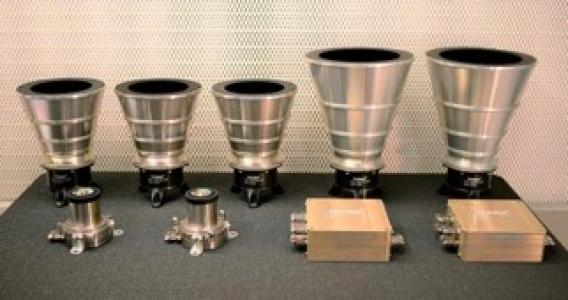Development of a high energy beam combination, ions and electrons, for radiation test of electronic components
Programme
GSTP
Programme Reference
G617-156QE
Prime Contractor
UNIV JYVASKYLA
Start Date
End Date
Status
Closed
Country
Finland

Objectives
The objectives will be the adaptation and calibration of high energy beam combination, both ions and electrons. The ion combination will range from light ions, protons, helium, up to heavy and highly ionizing ions, like Krypton, Xenon and Gold. The purpose is to use such beam combination for the irradiation of electronic components, to ensure their radiation hardness for space missions. A critical issue to address is the purity of the beam, and the accuracy of the dosimetry. The developed beam combination will be used by industrials at several stages (typically PDR and CDR) for all space projects involving electronic components.
Description
The test of electronic components under radiation is becoming increasingly difficult because of denser and more complex packaging of the state-of-art components, such as microprocessors, memories, FPGAs, packaged in plastic, ceramic or Flip- chip configurations.This implies a larger beam range of the irradiation beam combinations, in order to reach the active and radiation-sensitive semi-conductor die of the component. The larger beam range is obtained with a high energy beam combination.
The required heavy ion beam energy to test state-of-the-art components is 15MeV/nucleon, for a minimum range of 140-150um for the heaviest elements.
Presently, when a high beam range is required, European foundries, space system industrials and test houses perform radiation tests of electronic components in non european institutions, where such high energy beam combination (15MeV/nucleon) are available. The proposed activity will aim at the development and calibration of an equivalent ion beam combination in Europe. It will be used for all ESA supported and other space missions (Science, Telecom and Navigation, Earth Observation), as well as for the ISS and all launchers, as part of the qualification requirements.
The developed beam combination will include all species to induce ionizing effects from below 0.4 MeVcm2/mg up to 80MeVcm2/mg:
- Protons from low energy (about 0.5-1MeV) to induce directly ionising effects up to about 50-60MeV for indirect ionising effects by nuclear interactions.
- Heavier ions: He, Ne, Si, Ar, Fe, Kr, Xe and Au, at 15MeV/nucleon.
The dosimetry will be done for all species, ensuring a mono-energetic beam, and a uniform spot of at least 2cm diameter. All operations will be traceable, with easy software management and storage.
The following tasks will be performed:
- Development of the ion beam combination and the irradiation beam line based on the available equipments.
- Calibration and dosimetry, including time-of-flight experiments to measure the energy deposited by each species of the ion beam combination.
- User-friendly software management and data storage.
- Website for the experiment scheduling and technical information.
In addition to these tasks related to the ion beam combination, high energyelectron beam will also be developed. The purpose will be to test electronic components exposed to electron-rich environments, such as for the JUICE mission and all MEO orbit programmes. In particular, modern components are sensitive to single event errors induced by high energy electrons, which can induce potential failures of the space system. The work related to high energy electrons will be to develop the dosimetry tools and calibration, in terms of both electron flux and total ionising dose, specific to high energy electrons.
Application Domain
Generic Technologies
Technology Domain
23 - Electrical, Electronic and Electro-mechanical (EEE) Components and Quality
Competence Domain
10-Astrodynamics, Space Debris and Space Environment
Initial TRL
TRL 3
Target TRL
TRL 6
Public Document
